When we decided to get married and sell everything to travel the world, we knew that this new lifestyle was going to be fun, exciting but also cheaper than staying at home. What we did not know was how much cheaper it was going to be to live a very high quality of life where we would enjoy the local food scene, cook amazing meals, take regular getaway trips, spend time in nature, attend local shows/festivals and everything else you get the freedom to do when you decide to travel the world slowly.
As we are closing our first year of nomadic travel, I am digging into our finances to answer this question and the results are pretty exciting. In a nutshell in the last 12 months, we slow traveled to 10 locations in 5 countries for about half the cost of living in San Francisco. But more than reducing our spending, geo-arbitrage let us rebalance our expenses towards activities that we enjoy the most, spending more time with our respective families, living a less stressful life and exploring new places in the world.
So let’s dig into our spending report for our first year of nomadic living!
Did we break the bank in our first year of nomadic travel?
In our last 6 months in San Francisco (from January to June 2018) our cost of living was about $25,000 (or $50,000 a year) because we are super savers! For reference, the average household spends much closer to $80K/year (source: Bureau of Labor Statistics for the year 2016-17). Over the past few years, we got our spending under control by becoming aspiring minimalists and prioritizing experience over stuff. However, we mostly stayed in one place and traveled 4 weeks per year.
(Note: for more details about our spending pre nomadic life (in California), check out our 2018 Year End spending report).
So how much did we spend since we became nomadic? Well we share that number, let’s talk about what we’ve done so you have something to put next to that number. During our first year of nomad living, we got to live in wonderful places and see different parts of this beautiful world. We spent 4 weeks in Montreal, 3 weeks traveling with our family in Quebec, 6 weeks in Quebec City, 15 weeks visiting family in San Francisco, 1 week in Puerto Vallarta, 6 weeks in Mexico City, 4 weeks in Oaxaca, 4 weeks in San Miguel de Allende, 4 weeks in Aruba and 5 weeks in France. Not bad, right?
Because videos nowadays are worth more than a thousands words (ok I just made that up!), here are some for you.
In late winter of 2019, we stayed for a month in paradise on the Caribbean island of Aruba, practicing daily swim in the ocean.
In Spring of 2019, we saw a fantastic Superbloom in Southern California that was such a unique experience for the eye.
In fall of 2018, we visited the charming & magical little town of Tepoztlan during our 3.5 months in Mexico. This place was truly magical and should be seen before hordes of tourists take over it.
And here are a few selected memories for this past year of travel around the world
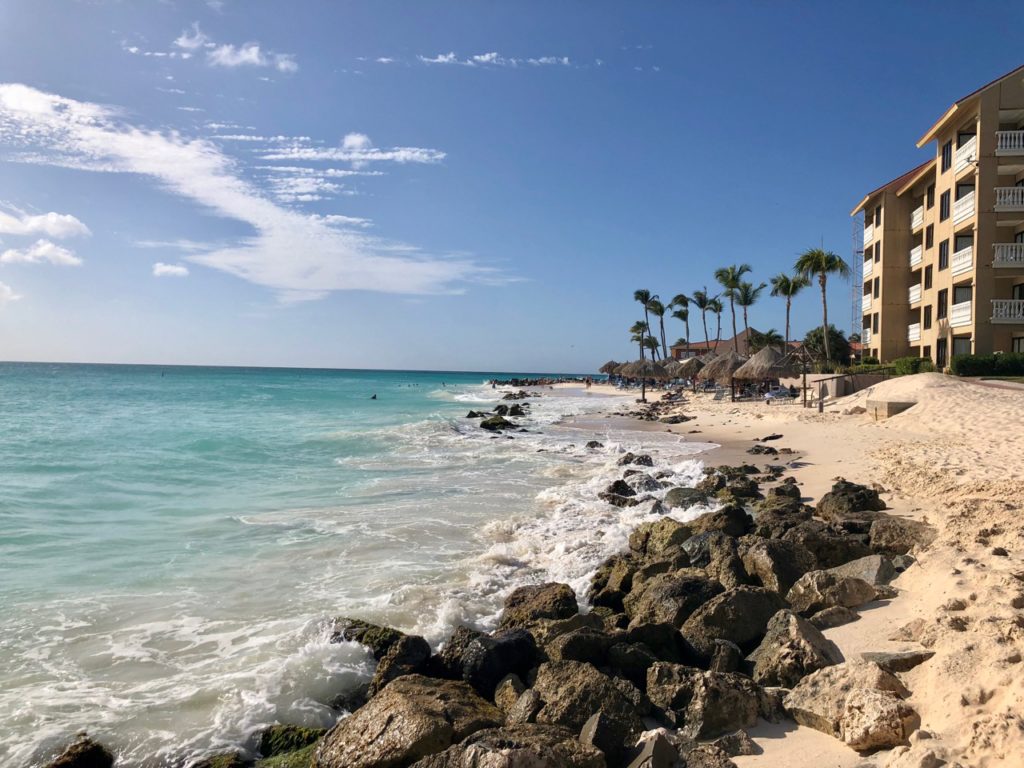
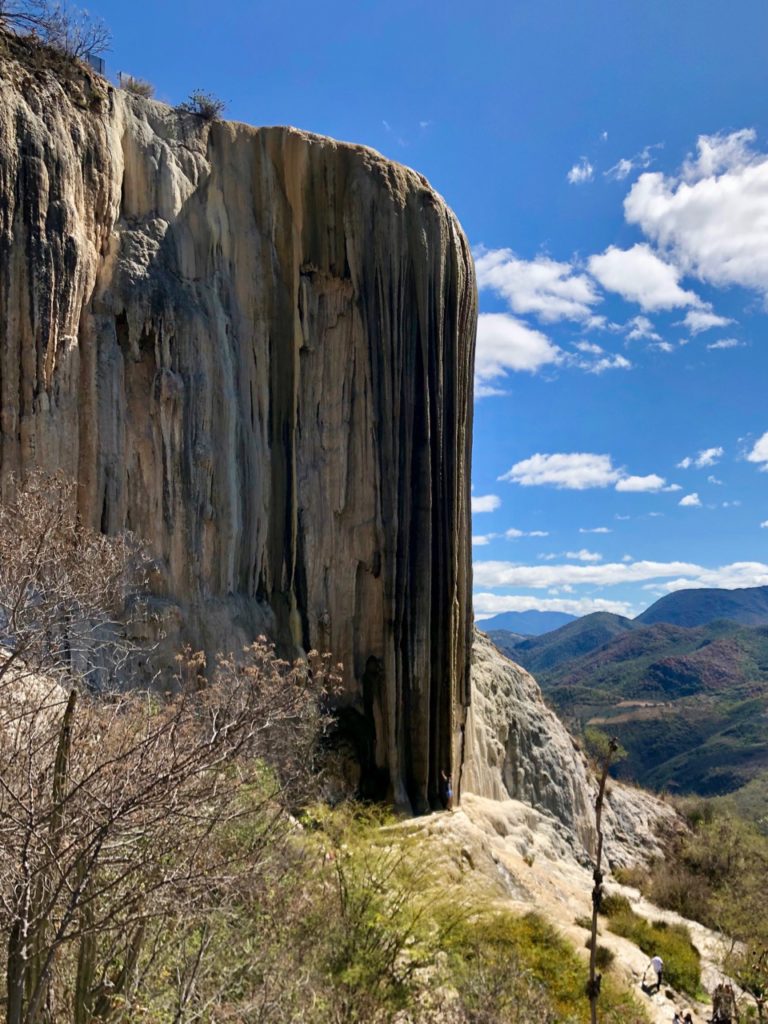
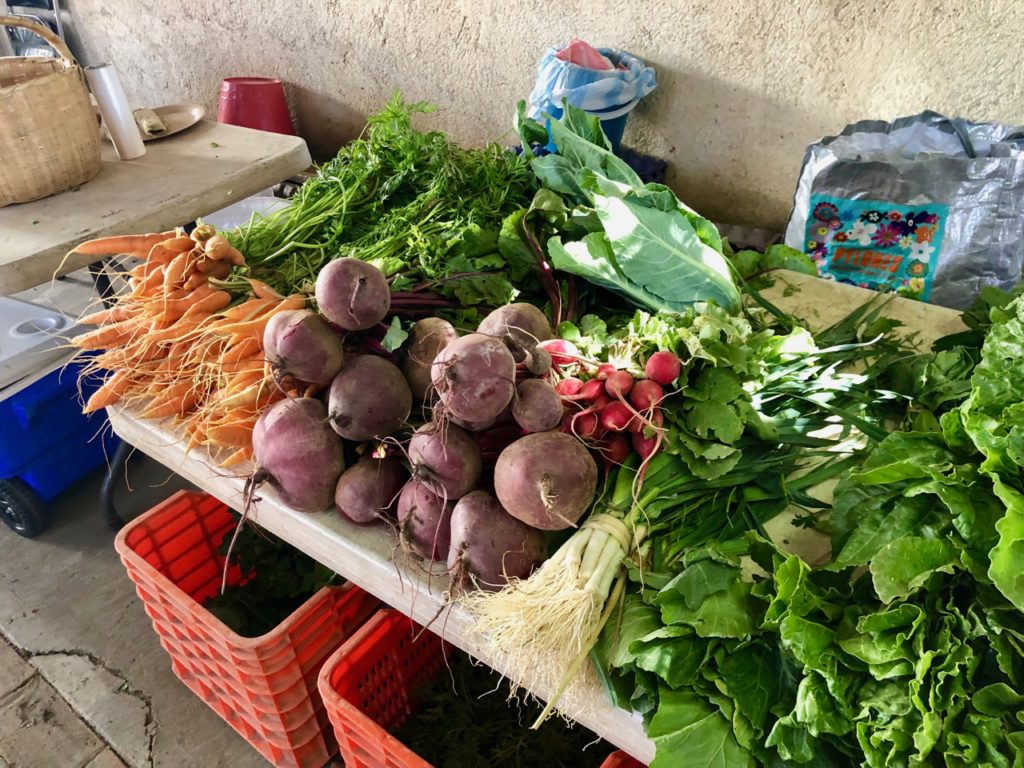
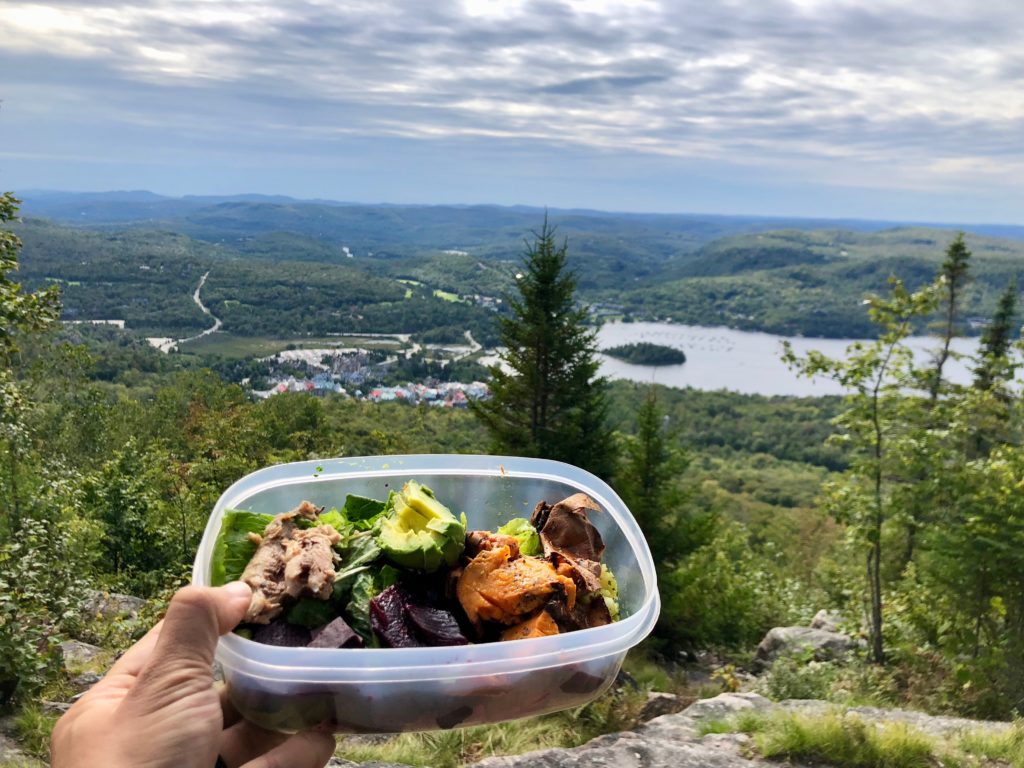
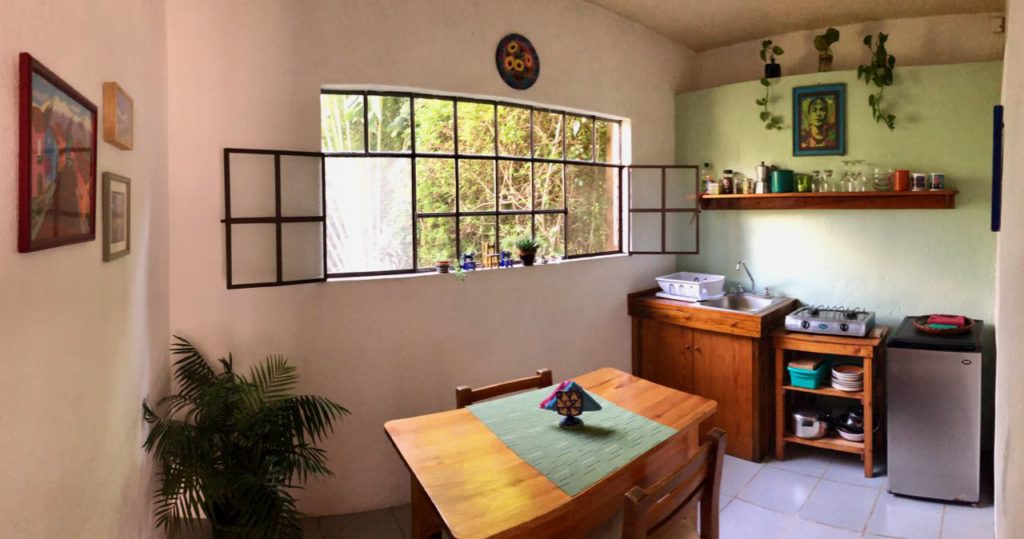
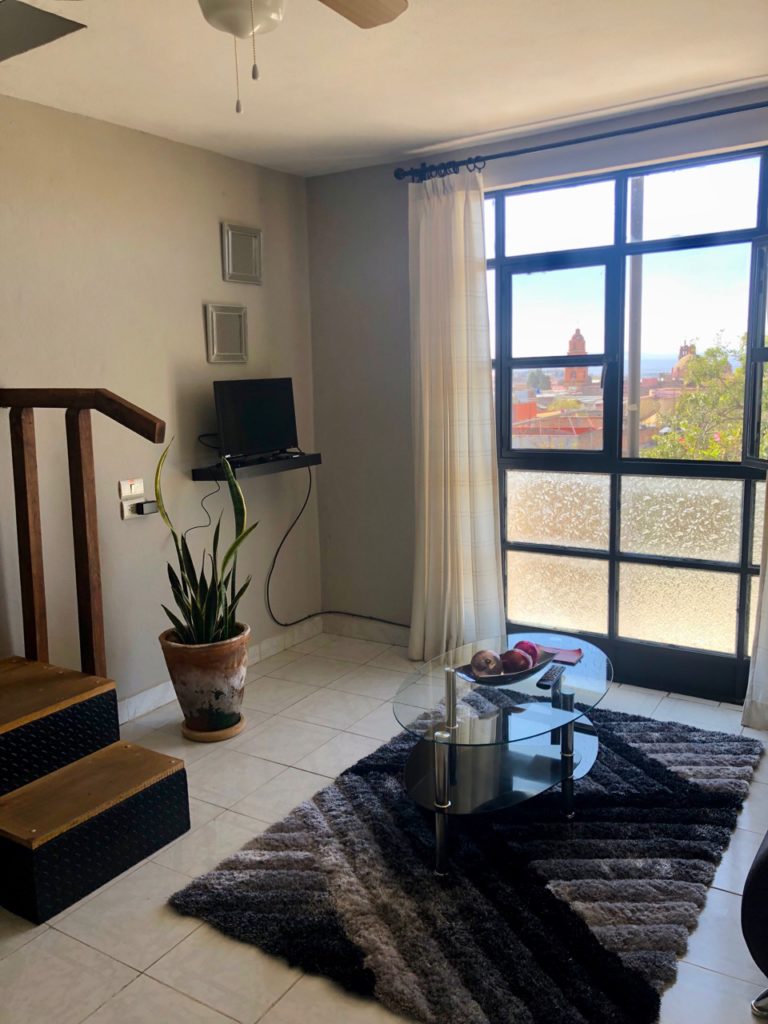
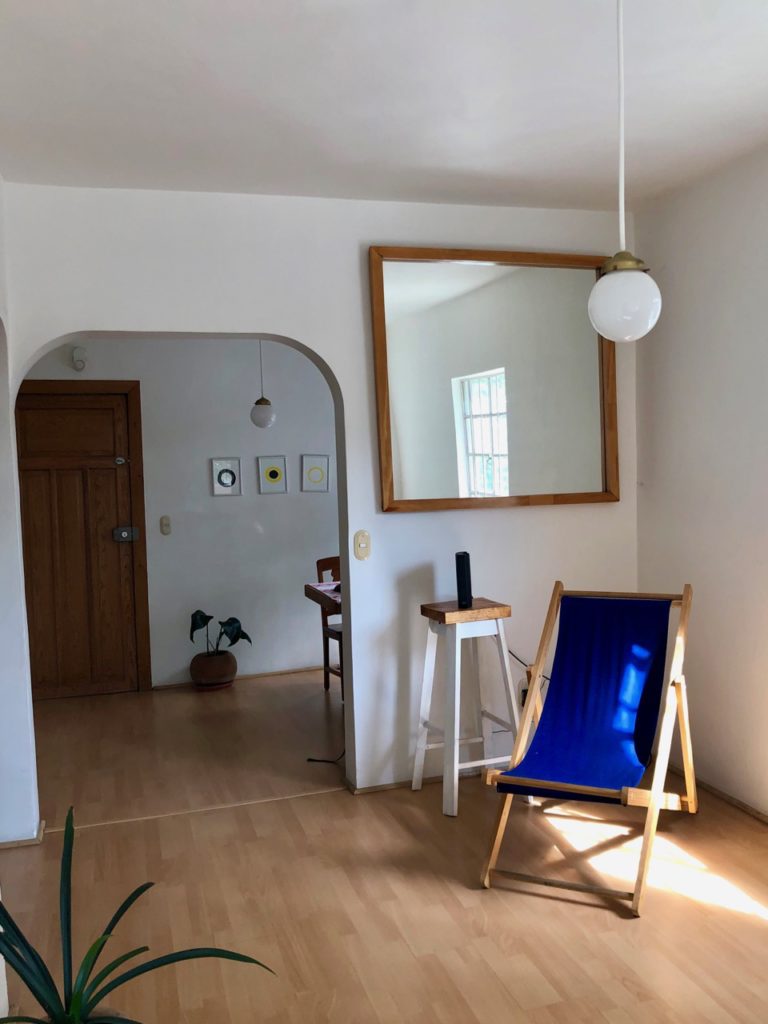
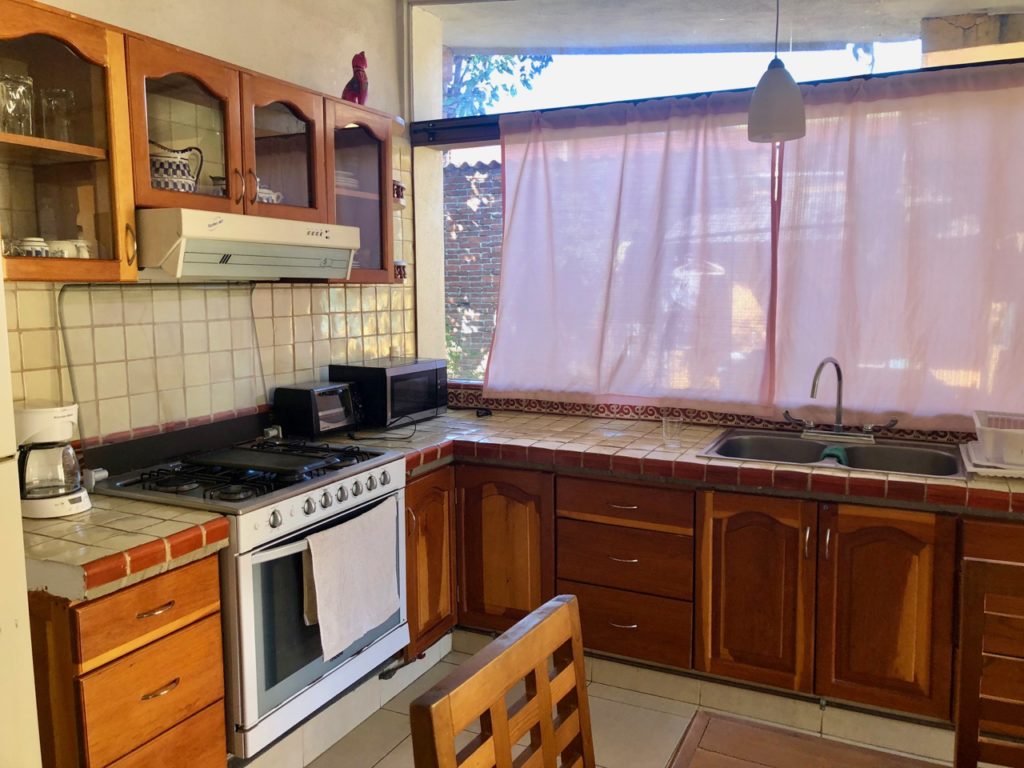
Ok so here we go! The cost for our first year of nomad living ended up being $28,628 for 12 months (or 373 days to be exact). This is about half of our cost of living in San Francisco while staying home!

Spending per category
Here is the breakdown of our budget per category:
| Category | Amount spent |
| Accommodation (mostly AirBnB) | $9,131.05 |
| Groceries | $5,070.91 |
| Dining out | $4,182.82 |
| Travel Gear | $2,662.21 |
| Local Transportation | $2,540.26 |
| International Transportation | $1,768.00 |
| Entertainment | $1,188.51 |
| Living Expenses | $642.70 |
| Health Care | $555.30 |
| Gifts | $525.72 |
| Snacks | $352.78 |
| Insurance | $8.00 |
| Total | $28,628 |
Without much surprise, our top three categories remained the big three that most people have: accommodation, transportation and food. Our biggest expense for this first year was food (groceries + dining out + snacks for a total of $9,605) followed by accommodation (*$9,131) and transportation ($4,308).
Our transportation cost was made up of local transportation ($2,540) and international transportation ($1,768). Since the two of us flew internationally 8 times, this cost is pretty low and can be explained by a solid travel reward strategy that helped us saved thousands of dollars. (If you want to know more about this, check our guide on how to fly the world for (almost) free with Travel Rewards.
After the big three, our next biggest expense category was Travel Gear. These expenses reflect the few adjustments we made to our carry on packing list for nomadic travel as we traveled to several countries. We don’t expect this cost to carry over into our second year and we feel pretty good with our latest acquisitions.
Our Insurance category was pretty low ($8) as April 1st was the first day where we weren’t covered by an employer sponsored plan. Since we qualify for ACA Subsidy and were in California from April until early June, we subscribed for the Affordable Care Act (ACA) and only had to pay a $1 premium (/ person / month) to get coverage in California for an entire year. We have since then purchased a worldwide travel expat insurance (via ING Global) that we will be fully integrating into our 2nd year of travel. The cost of our insurance is just under $3,200 for the two of us.
(*) Accommodation: we had a lower than expected accommodation expenses as we spent about 16 weeks (or 4 months) with our relatives back home. We are prioritizing spending between 2-4 months per year with our family, often staying with them.
Here is the same information in a beautiful doughnut charts, because who don’t like doughnuts?



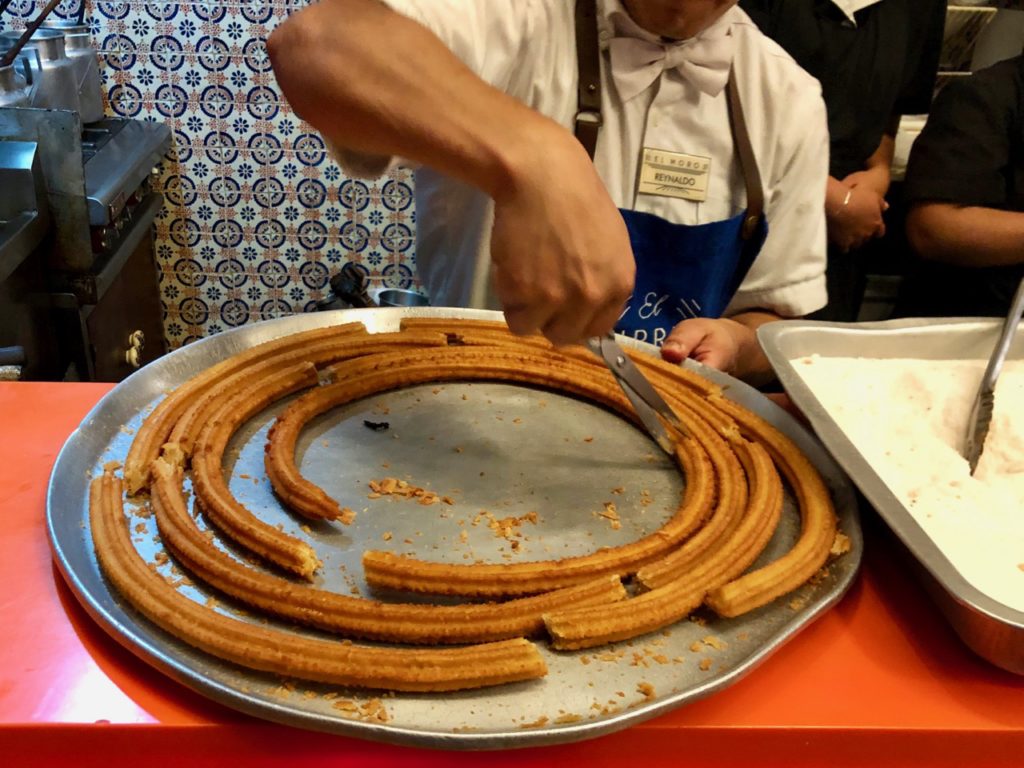
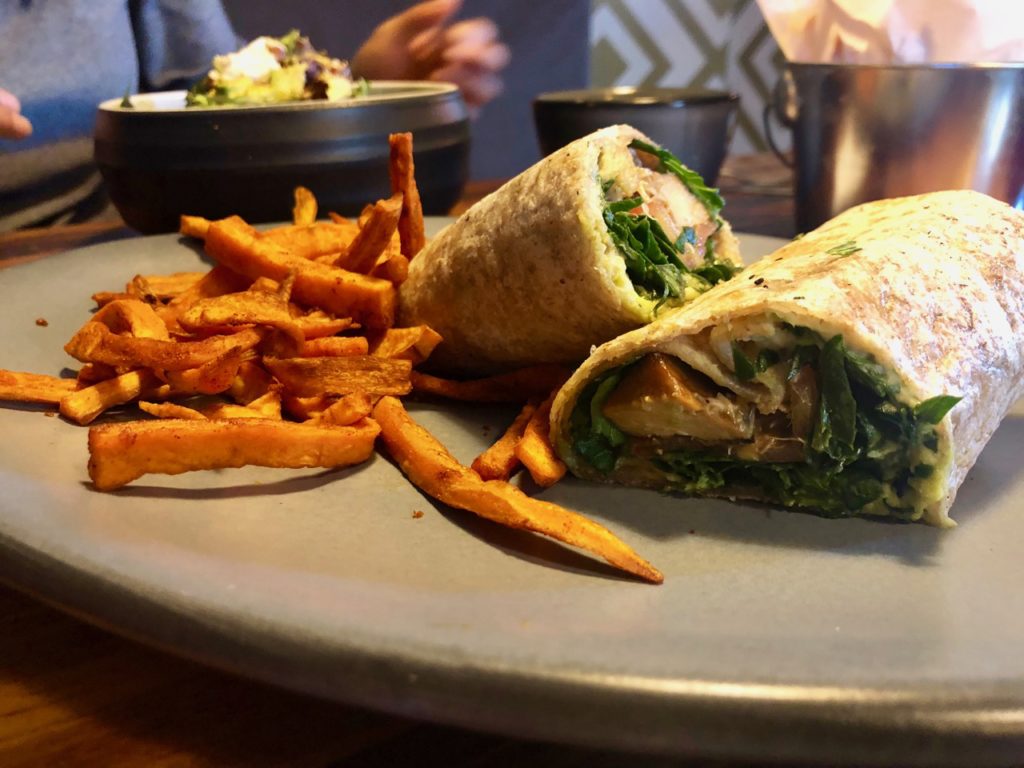
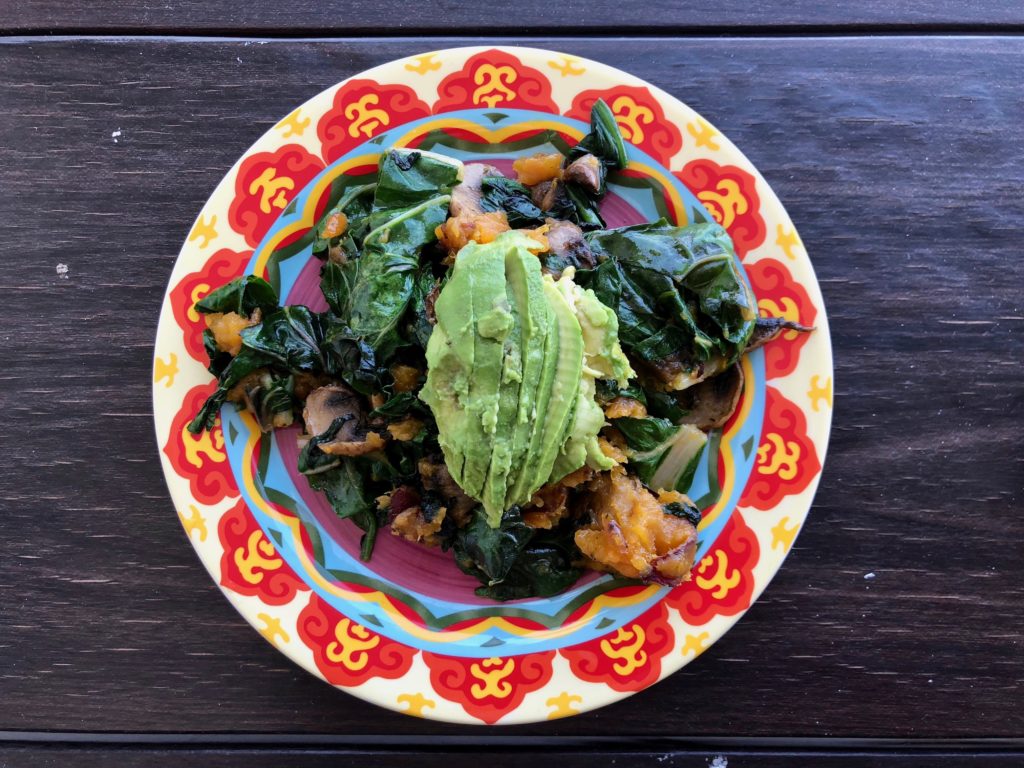
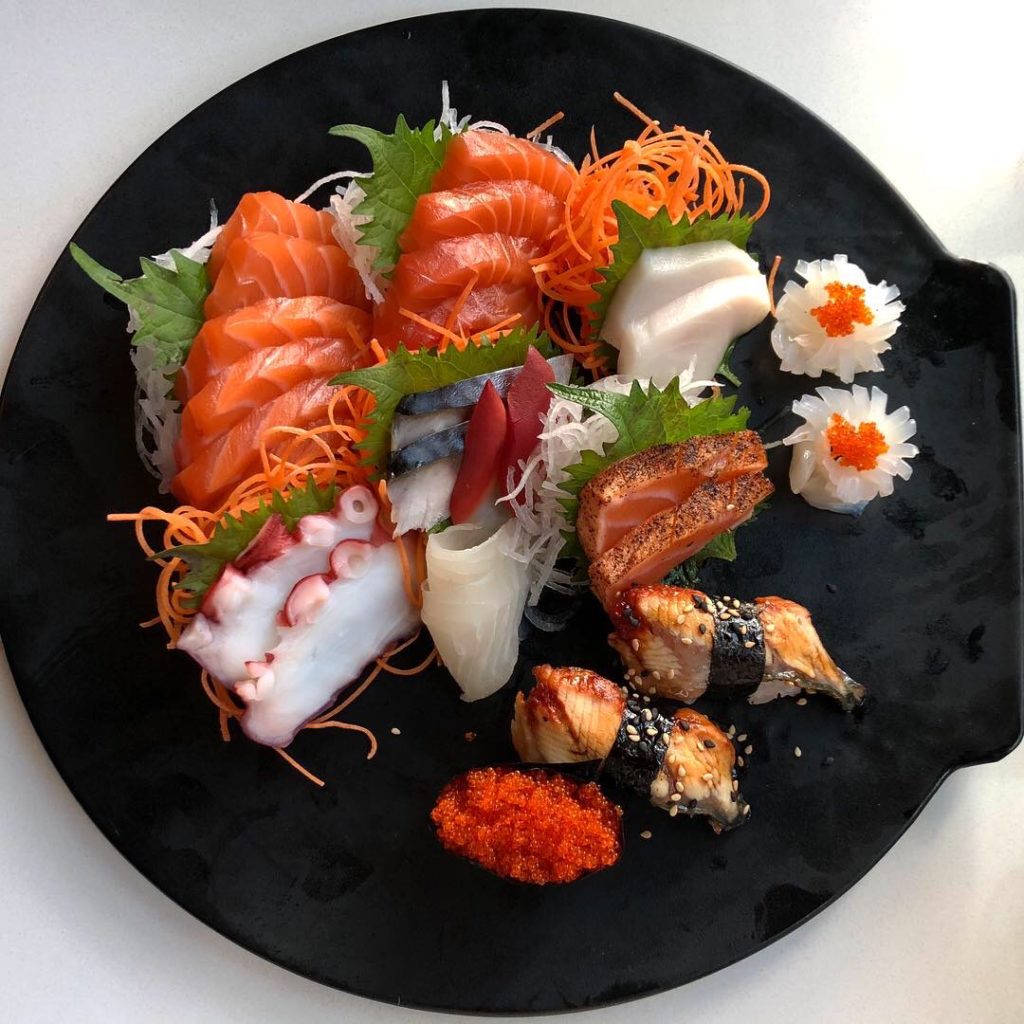
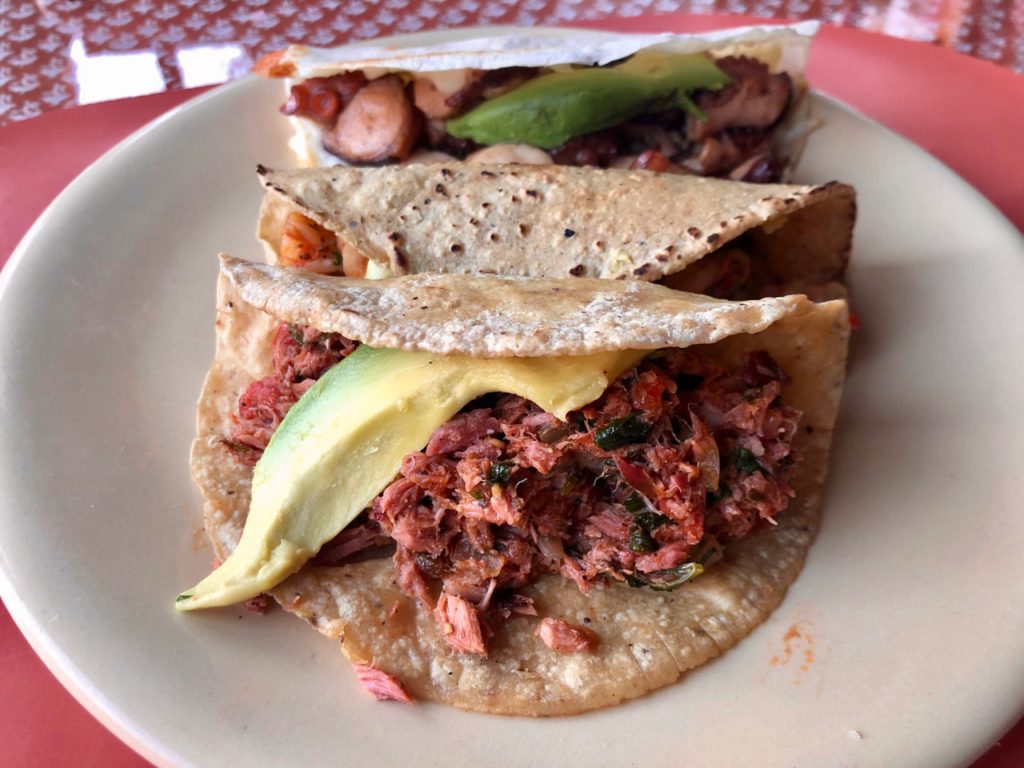
Spending per destination
Let’s now take a look at all the destinations we’ve visited during our first year. We’ve put together the cost of living for each of the places we’ve been slow traveling along with the daily budget this cost of living represents per person so we can normalize the data across destination.

As you can see, slow travel (& geo-arbitrage) enable you to really enjoy the world at a very affordable cost. Even in Aruba (which is considered to have one of the best beach in the world) we spent less than $50 / day and per person for an entire month! FYI $50 / day / person would barely cover rent in a 1 BR apartment San Francisco!
Note: As we travel the world, we want a realistic index of cost of living based on our lifestyle so we can easily compare destinations. This is what we call “cost of living” in the previous graph and it integrates all the spending categories listed above except the following:
- International travel: this is basically the cost to get in/out of a destination
- Travel gear: these are one time purchases that aren’t relevant for the destination
- Insurance: while (health) insurance is critical for us to travel, we are not including it as part of the cost of living of a given country because we would expect to use the local health care system available in such country. For your information, the expat worldwide insurance we just sign up for our 2nd year of travel was less than $3,200 for year for the two of us (or $4.38 per person and per day).
And for consistency, we added at the bottom of the chart a line item called “Non living cost” that represents the costs mentioned above that got us to our $28K budget for our first year of nomadic travel.
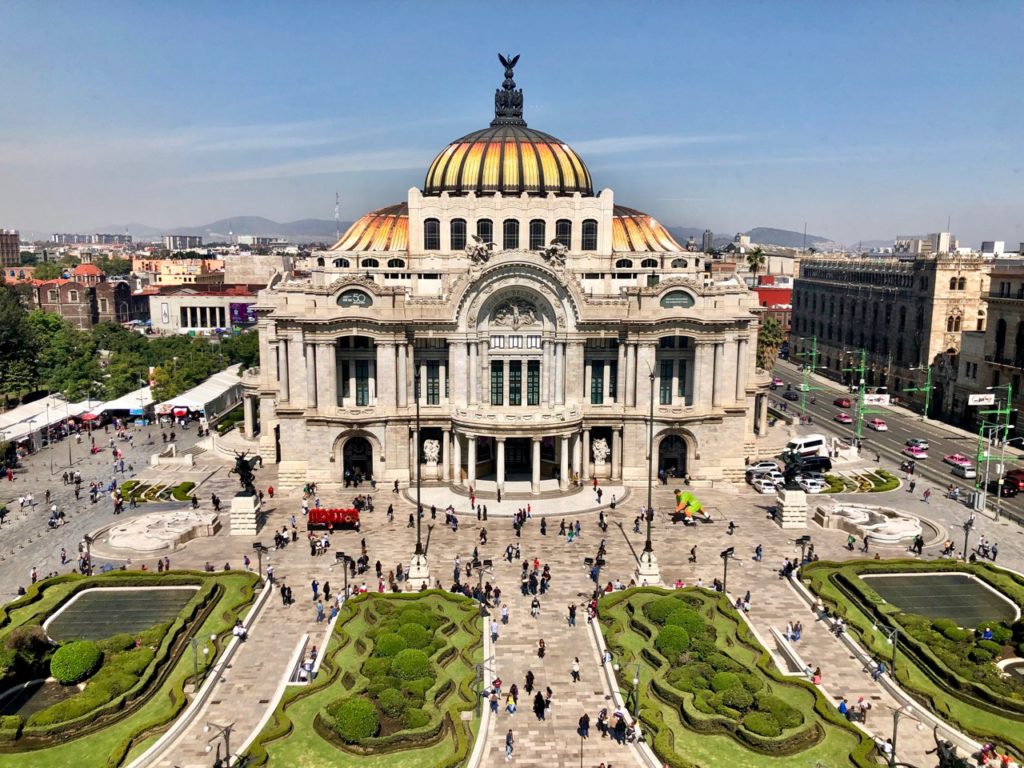
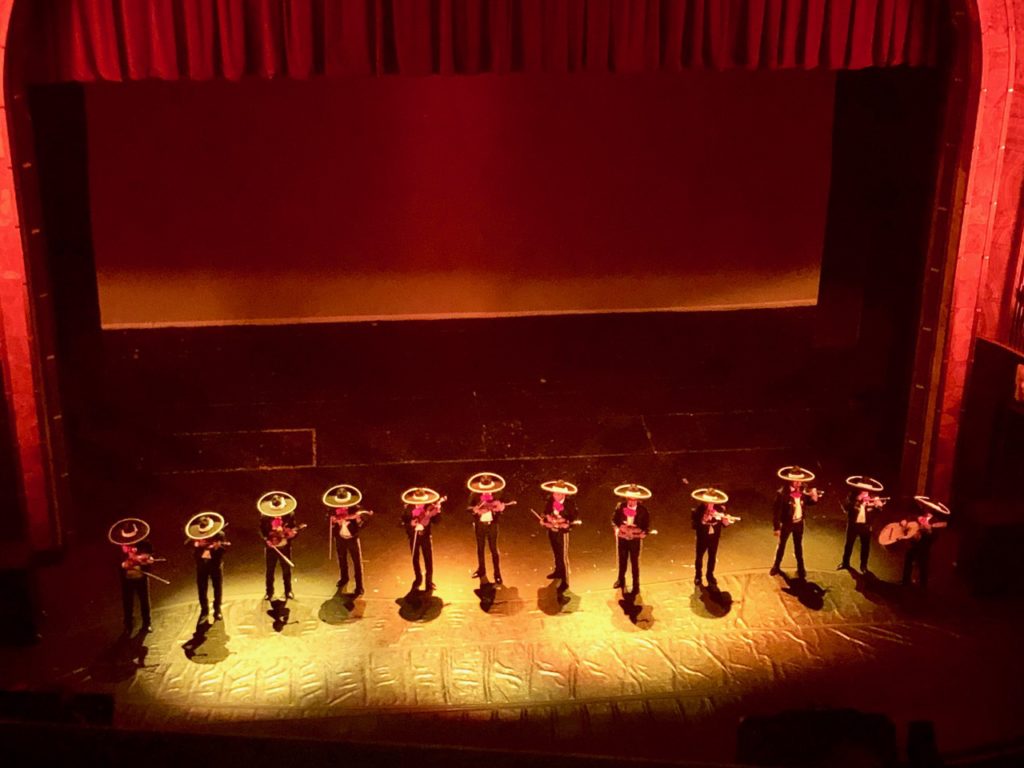
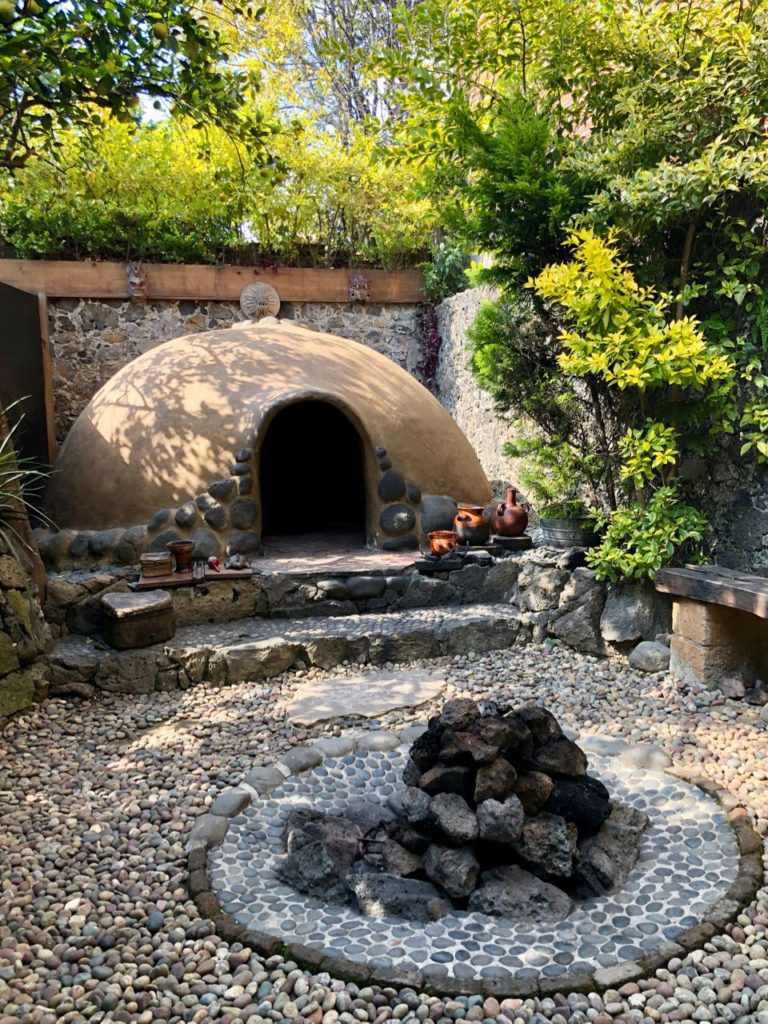
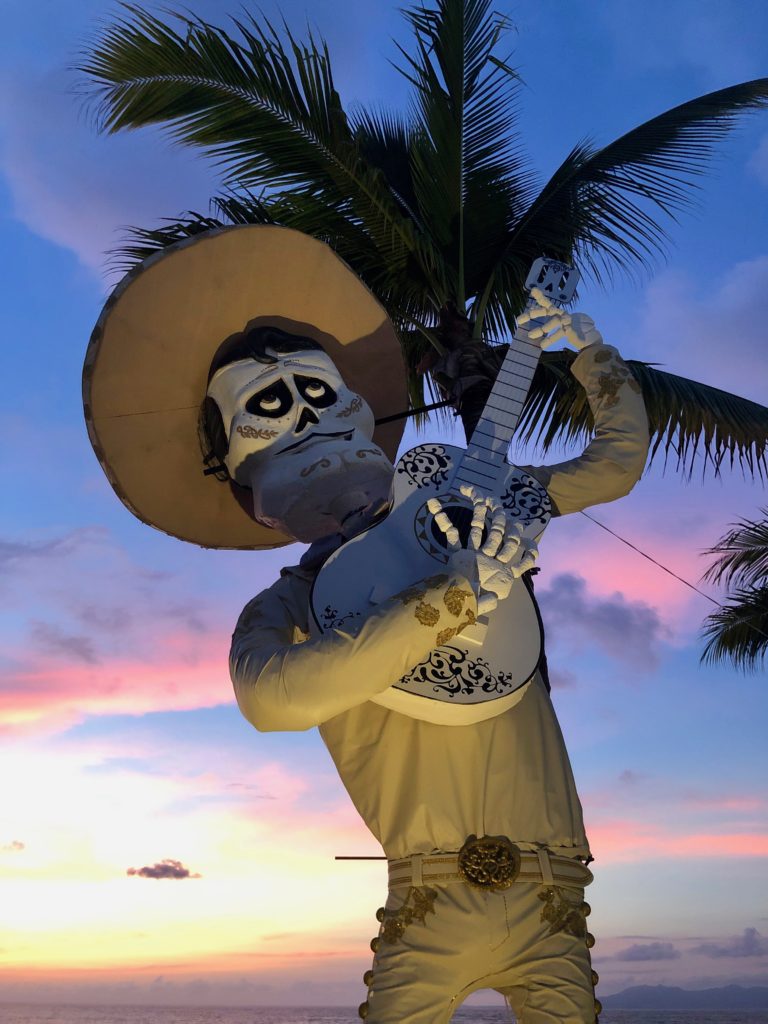
What do we expect for our 2nd year of slow nomadic travel?
July 1st marked our second year of travel. We started it in Europe where we plan to stay for the first third of this new travel year. The second third of that year will be spent in South East Asia and we haven’t figured out where we will be going next. We are slackers, right? 🙂
Based on that, we are expecting the cost of our second year to remain about $30K.
What do we expect to increase from this year?
- (health) Insurance cost as we need to purchase our own coverage for an entire year. We did a lot of research and already prepaid 12 months of insurance for the two of us (with ING Global) for a total of about $3,200. This provides us with worldwide coverage for any major catastrophic event (we are knocking on wood for none of that to happen). We will likely be writing more about this once we will have more experience and data about our coverage.
What do we expect to decrease from this year?
- Travel Gear cost as we feel pretty good about what we carry with us as nomadic travelers.
What do we expect to stay the same?
- Accommodation cost since South East Asia is known to be really really inexpensive. This should nicely balance the fact that our accommodation cost for this first year was below our expectations due to a few months that we stayed with our families.
What did we add to our budget from our last report and why?
If you read our previous spending reports, you might have noticed that we added new categories to our expenses. So for full transparency here is what we did added to this spending report (from the previous one ) and the reason why:
- Dining out / Snacks: We split “Snacks” from “Dining out” as we realized that we have a pretty big sweet tooth when it comes to traveling to new countries and we are curious to keep an eye on how much “Snacks” we will be consuming!
- Gifts/Charitable giving: While this is a discretionary expense, we decided to add it because why not?
- Services subscriptions: The main subscription that we have are Google Drive storage ($2 / month), Traveling Mailbox ($150 / year) and Google FI ($50 / month). We are currently capturing these under our “Living Expenses” category.
Want more details?
If you are interested to get more details about the budget related to each place we’ve visited, please take a look at both our destination reports & weekend guides. We share detailed spreadsheets with both consolidated and line by line items of what we’ve spent. You can also look at our previous spending reports.
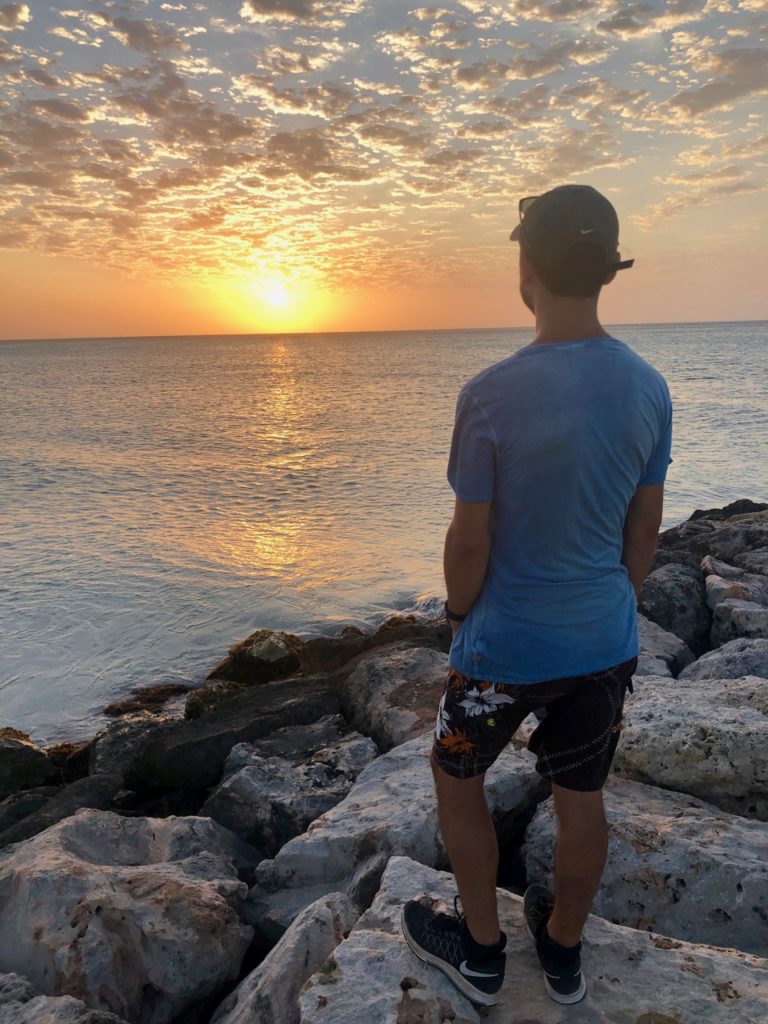
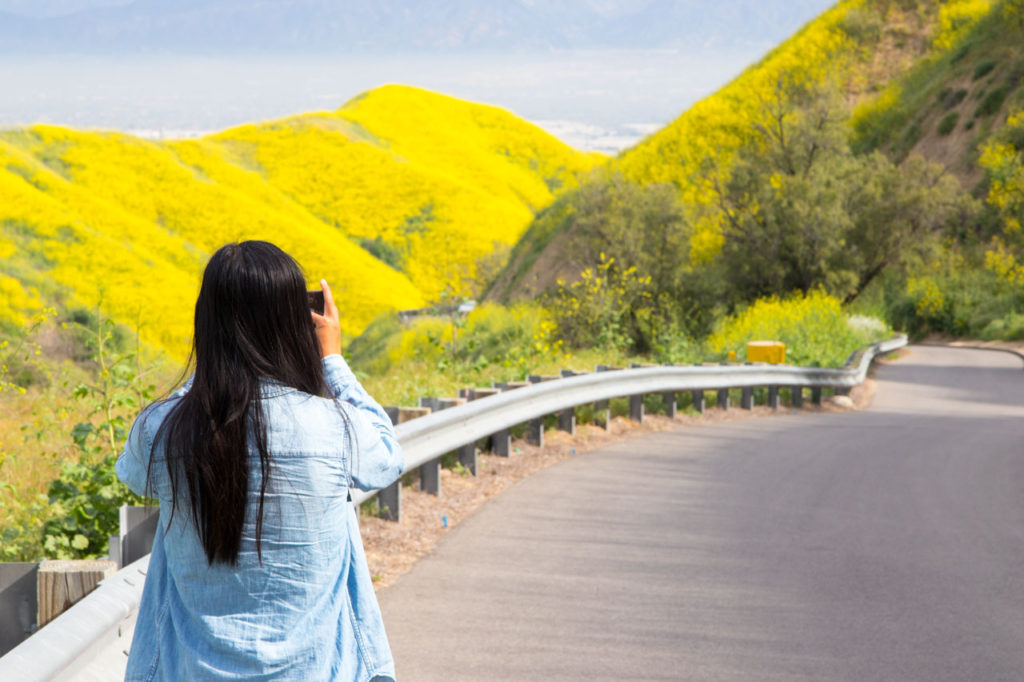
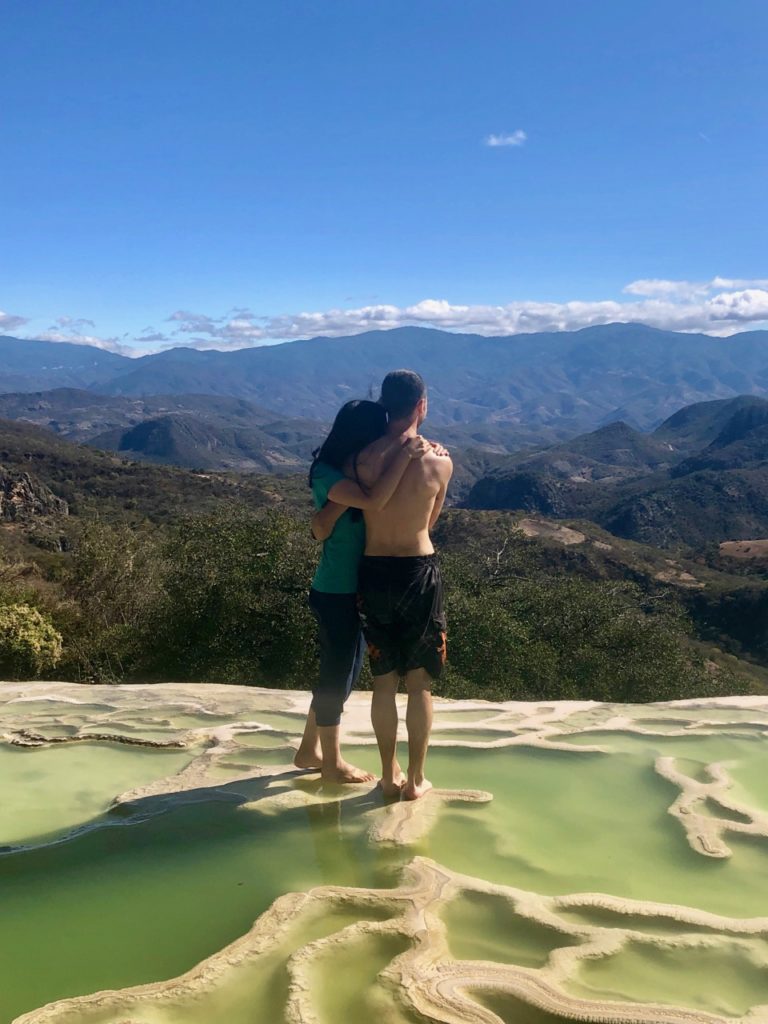
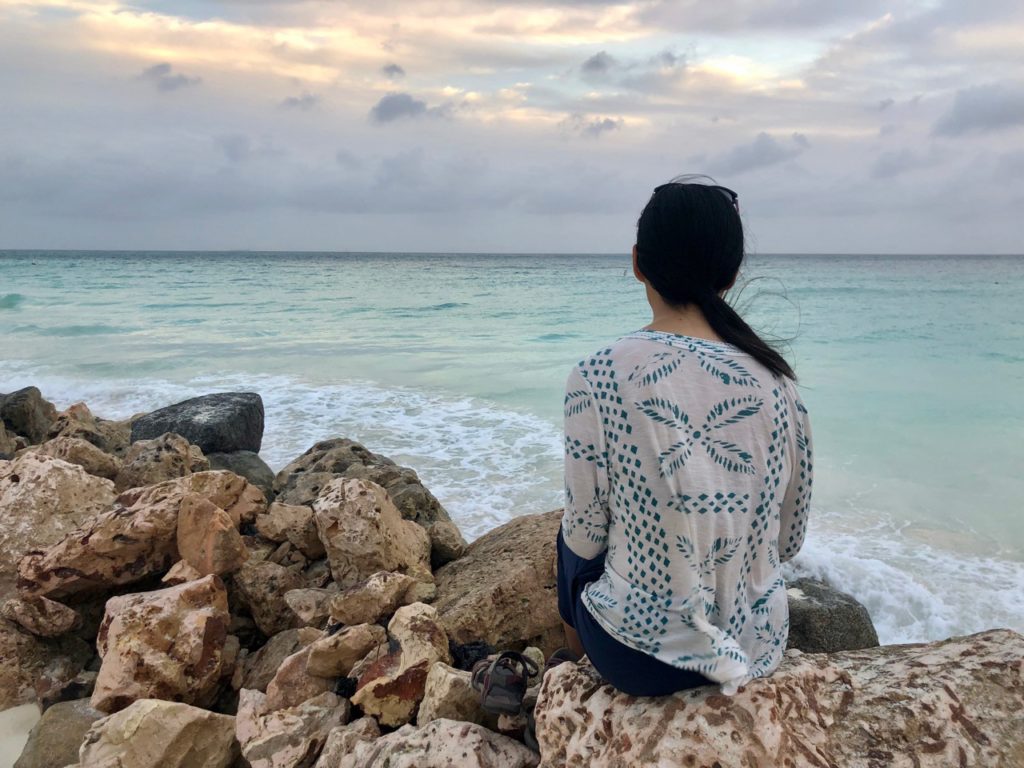
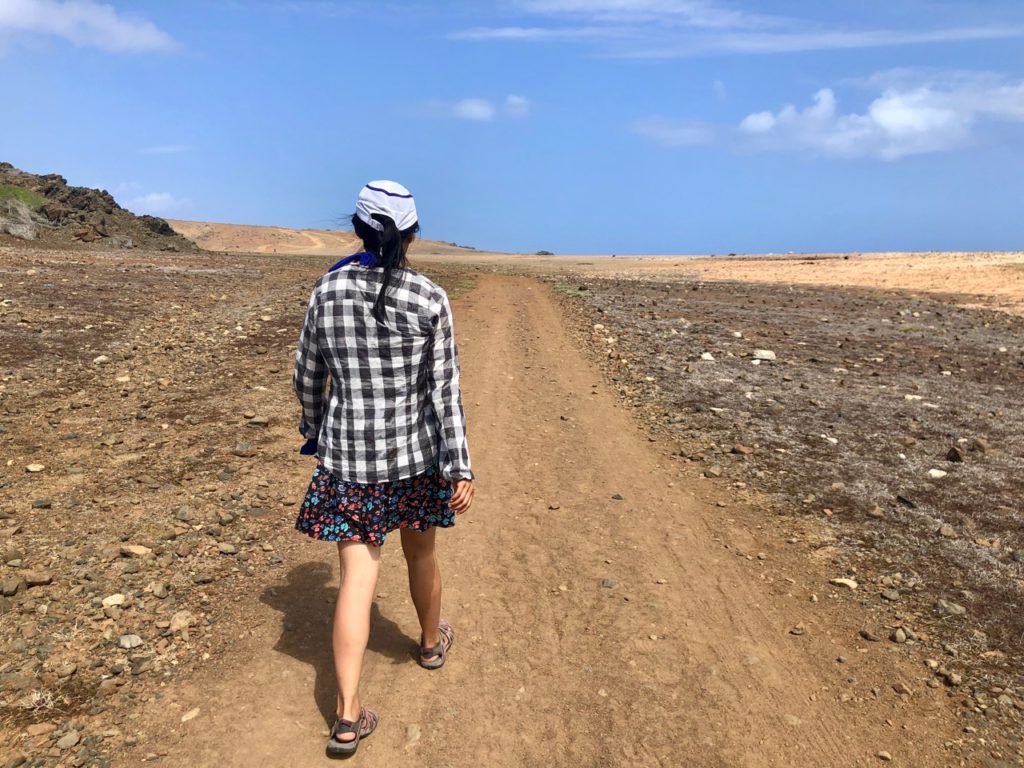
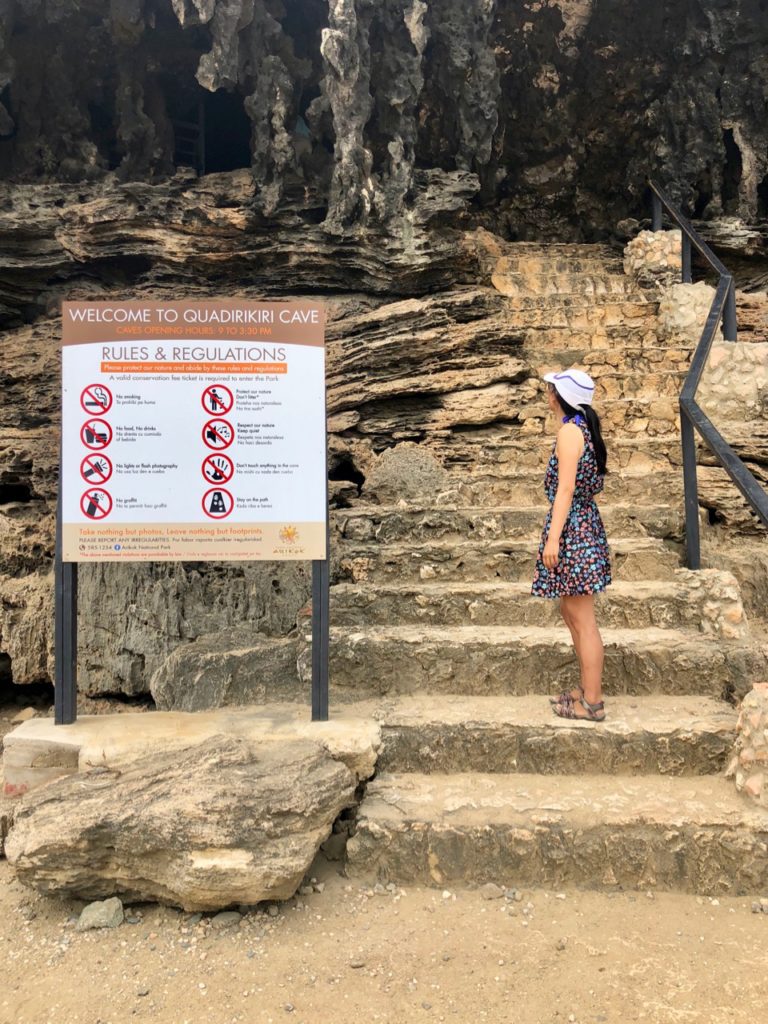
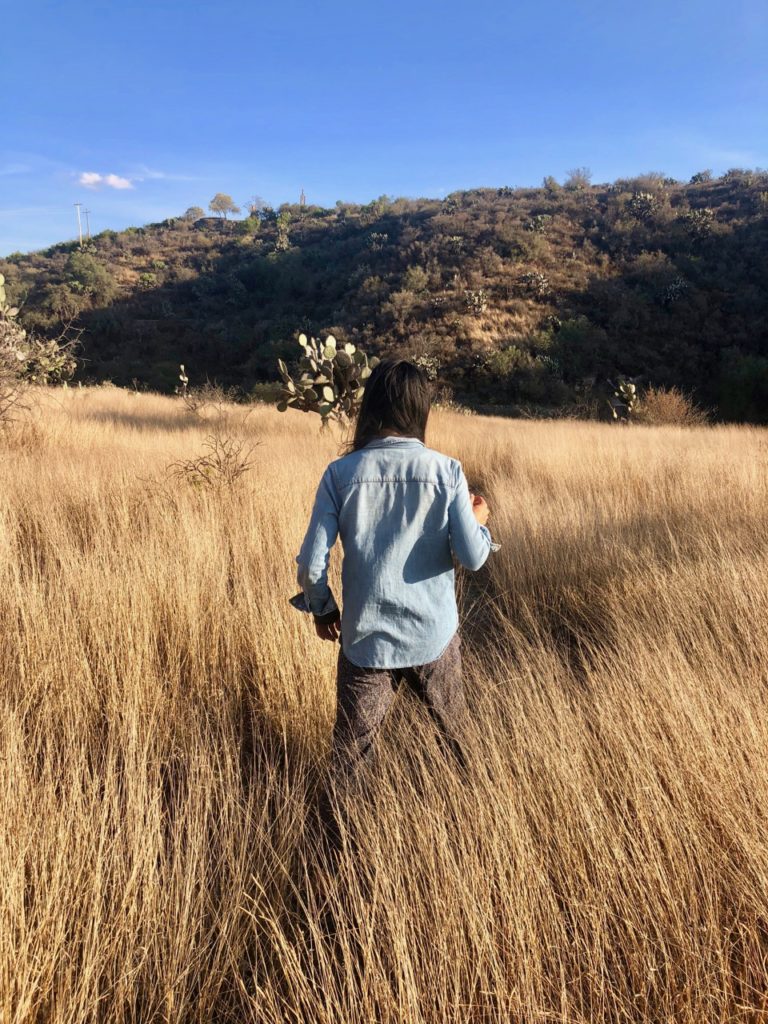
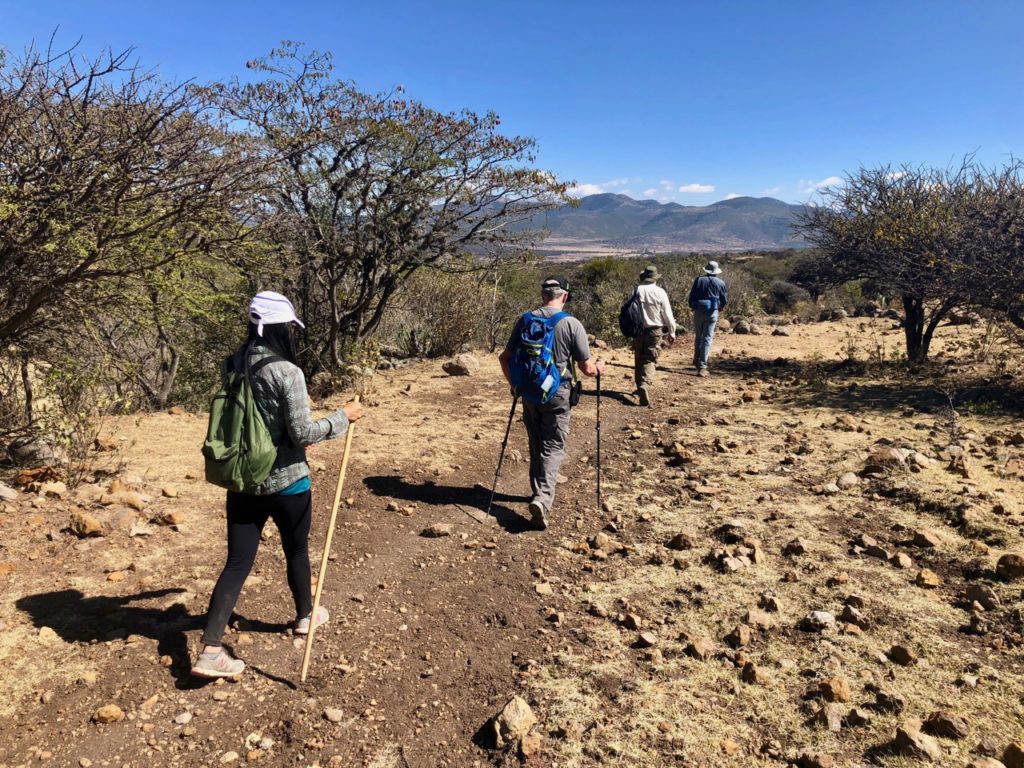
Our bottom line
Since we started our nomadic lifestyle, we felt less stressed and are having a lot of fun roaming the planet, one city at a time. This lifestyle gives us the freedom to spend our time on the things we care about like reading some life changing books, learning news skills, starting projects we are excited about (like this blog, our cost of living expenses series, our daily Instagram feed or some cool drone footage we are sharing on our Youtube channel).
As an added bonus, slow and nomadic travel can be much cheaper than staying at home! In our case, it was half the cost of staying at home!
Don’t know what a slow travel life can look like? Then feel free to start by reading our destination reports and weekend guides. If you like what you are reading and want to take a dive (let’s say for a few weeks/months at first) you might want to learn how we handle our physical mail while being away from home for so long, how we got a very affordable phone plan anywhere we go or take a peek at our carry-on packing list for long-term travel. You might realize that this lifestyle can be more affordable that you thought and definitely fun! And if you think we are crazy people, you might want to read more about our origin story and how we decided to became nomad.
Have you been traveling long term? Then let us know what you think about our numbers. Do they align with what your experience has been? We would love to hear from you, so please leave us a comment in the comment section below.
Until next time, happy, safe & slow travels!
Mr. & Mrs. Nomad Numbers




33 Comments
Brenda Kroez · July 29, 2019 at 1:12 pm
Thank you for sharing all the details about your budget and how successful you’ve been in your first year of nomad life. Love reading your blog and your Instagram posts. I will be 60 in September and while we won’t be full time nomads, we are going to minimize our lives and move to a much smaller place that we can just walk away from for months on end, so we can enjoy experiences (and travel) over “things”. Thanks for the inspiration!
Mr. Nomad Numbers · July 29, 2019 at 3:14 pm
Hi Brenda. Thank you SO MUCH for your comment. It is people like you that motivate us to take the time to share our story. We are so happy for you that you are going to start traveling a few months at a time. What a way to celebrate your upcoming birthday! Please keep us posted of your future adventures and create wonderful memories through your travels!
Andrew · July 29, 2019 at 3:45 pm
Very inspiring!
Ludo · July 29, 2019 at 3:49 pm
Déjà 1 an ; la vache, ca passe vite ! Je commente rarement mais je lis tout le temps : ton périple est toujours aussi intéressant à suivre. Je profite aussi pour te souhaiter un bel anniv de mariage – avec un poil de retard, certes – (l’article de ton mariage est bloqué en commentaire) et je te remercie aussi pour nous y avoir gracieusement invité. Profitez bien de Porto !
Mr. Nomad Numbers · July 29, 2019 at 5:20 pm
Merci Ludo! It’s great to see that you are consistently reading our content. Please let us know if our adventures inspire you guys to look at travel (and general living) a bit differently 🙂
Betsy · July 29, 2019 at 4:19 pm
Thank you so much for sharing all of this info! My husband and I will become full time travelers in Jan 2020 and it’s helpful to see it can be done without spending a fortune! One question: for Airbnb, do you always book for a full month to get the discounts? We’ve seen people recommending staying a couple of days in a new place first and then figuring out where you want to stay. I would worry about the best places being full already if we booked last minute. But then what would we do if we had a place booked for a month and then didn’t like it? Any advice is appreciated!
Mr. Nomad Numbers · July 29, 2019 at 5:39 pm
Congrats on becoming full time travelers is less than 6 months! This is SO exciting. Which place are you going to visit first?
For AirBnB we always book for a month in full prior to visiting any countries. To decrease risks of being disappointed by the accommodation we want to book we have been relying mainly on two techniques. A) We read ALL reviews for any listings we like and usually automatically discard listing that have too few reviews. This provide great insights about what the place might be lacking of (like a kitchen with not enough kitchenware, or a tricky bathroom) as well as the location itself (is it really a 5 minutes walk to the beach or the grocery store?). B) We exchange with the host before we confirm our booking and ask any questions we have, especially anything that caught our attention in the reviews. So far this process has helped us discarding “bad” options. By doing this homework beforehand you should not have a bad surprise upon your arrival. That being said, is something terribly wrong happen you still have the option to reach out to AirBnB customer support team to ask for help. We didn’t have to use them but read pretty positive story of people that had to use them and were provided with a temporary accommodation until the problem was resolve (along with full refund of the booking). This is definitely one of the reason why we like using AirBnB over other booking platform for long term stays.
Btw, if you haven’t read it yet, we put together our best AirBnB advices to find the best accommodation at the lowest available price on our AirBnB guide: https://www.nomadnumbers.com/airbnb-guide/
Once again, congratulation of becoming full time travelers in January of 2020! Please keep us posted about your itinerary as our path my cross in the future and we are always looking to connect with travel minded peeps 🙂
Betsy · July 30, 2019 at 3:26 am
Thanks so much – that is very helpful and I’ll be sure to read that post! We’re starting with 3 months in Ecuador and then the Camino de Santiago. That’s all we know so far. It would be great to meet you out there somewhere!
David @iretiredyoung · July 29, 2019 at 5:01 pm
A great summary of your first year and a peek towards what’s ahead. We travelled for 4 months in Australia and Asia last year, and I’m trying to persuade my wife that we need to do more (she’s still to be convinced about long trips though). My packing list wasn’t a million miles away from yours, I think I came in at closer to 11kg though, and didn’t have the big camera or drone. We had an Osprey bag, but it would have been better if it had more pockets to store bits and pieces in.
We spent more than you did by the way 😉 In case you’re interested, here’s the link to my summary post of our travels, where we went, what we did, what we packed , how much it cost etc https://www.iretiredyoung.net/single-post/2018/12/12/Early-Retirement-Travels-are-Finished
Mr. Nomad Numbers · July 29, 2019 at 6:29 pm
Thanks for stopping by David!
About Packing: Good job on your packing. That’s pretty impressive! Mrs. Nomad Numbers has an Osprey bag too and she likes it. For me I did not really had anything suitable that don’t need to be checked-in prior to starting our journey so I was able to think about what I would need and my Tortuga Backpack definitely deliver. (Note: I will be updating our packing list article – https://www.nomadnumbers.com/carry-on-packing-list-for-nomadic-long-term-travels/ – to include Mrs. NN packing list later this year as she made some interesting adjustment this year that should benefits to other women travelers
About Cost of travel: From looking at your travel post, you said that one thing you would have done different was to: “Travel a little more slowly, spending more time in less countries.”. Do you think this would have reduce your expenses? From looking at your numbers, “International Flights” then “Accommodations” were your two biggest expenses during this trip and we are always interested to know any tips that can help us optimize our spending. Any tips?
David @iretiredyoung · July 30, 2019 at 7:06 am
No particular tips, you guys seem to have it sorted.
Our international flights were more because we didn’t have access to reward points or similar to help reduce that cost. I’m trying to remember back to figure out how the local transport costs got so high, I think partly because of the long distances involved in Australia and also some internal flights in Australia an d Vietnam, but still it looks like a big number.
I think slower travel would have meant that we got accommodation where it is easier to cook which would have reduced the costs (maybe of both accommodation and food) – my wife mostly wanted to eat out as she thought of it as a long holiday quite often, whereas I wanted it to be more like a new part of normal life. I still haven’t figured out reward points – where we are, we actually have to pay for our credit card, a far cry from getting it for free plus a reward on top!
I want to travel more but my wife’s not so keen. That said, in September we head off for 3 months visiting California, Costa Rica and Colombia (my wife is with me for 5 of those weeks).
Mr. Nomad Numbers · July 30, 2019 at 2:46 pm
Maybe she will get used to it after doing it more often? It actually depends on the underlying reason(s) that she isn’t so keen about it. And for you if you are back on the road for 3 months as soon as September it seems that you will be traveling more in the short term. Btw, we have recommendation for the 3 countries you will be going to, so feel free to contact-us directly (via our newsletter or our contact form) and we will be happy to share them.
David @iretiredyoung · July 30, 2019 at 7:57 pm
Thanks, I’ll take you up on your offer.
Joe · August 6, 2019 at 4:45 pm
Nice job on the finance part of it. The international transportation part, in particular, is very low. Is that sustainable? Or will you need to spend more next year?
Global insurance is super cheap. Do you have to buy insurance for US coverage?
Mr. Nomad Numbers · August 7, 2019 at 11:30 am
Hi Joe. For our first year, we were covered for the first 9 months through Mrs. NN’s employer. After that we were covered under the Affordable Care Act which only cost us $1/person/month as our income qualified us for subsidies. For year two we got expat worldwide insurance with IMG Global that is costing us a bit more than $3K a year for the two of us. This will replace ACA that we don’t expect to renew next year as we won’t be spending more than 2 months a year in the US and or expat insurance would cover us there is we need to use it.
Regarding international transportation, the reason our spending is low is because we almost exclusively used miles (via travel rewards) to book our flights. We expect to keep doing this in year 2 so our expense should stay the same. This is one of the perks of opening credit cards in the US to get these sign on bonuses!
Katherine · August 19, 2019 at 5:38 am
We are gearing up to be able to slow travel more next year and we’re both very excited about it! Thank you for sharing this great info in your blog! Our goal is to spend 3 months in Europe and 3 months in Thailand, alternating each year. Here are a couple of sites/services that have helped us greatly already: 1) Scott’s Cheap Flight subscription service (they have a free service too, but it doesn’t give you as many opportunities to fly cheaply). They notify you of very inexpensive flights from your local airport and then tell you how to book the flight directly with the carrier. This is especially helpful if you don’t have many reward miles/points and/or are trying to optimize their use. 2) http://www.thearthawaits.com This is a fantastic site that allows you to enter a budget, a region of the world, and other filters, and it then provides you with all of the places that fit your query. Once you select a place, you can get into the details of the budget for that specific locale and really make it your own. I’d be very interested to know how closely it matches your experience from this past year. Hope this helps a fellow traveling spirit out there !
Mr. Nomad Numbers · August 19, 2019 at 2:34 pm
Hi Katherine. It is wonderful to hear that you are going to start slow travel really soon! Alternating Europe & Thailand is a great example of how you can use geo-arbitrage to save a lot while in Thailand and use those savings to spend a bit more while in Europe! When will you start slow traveling next year?
Thanks also for sharing these two ressources. We have been using Scott’s Cheap Flights prior to becoming nomadic and they gave us some really good deals at that time. Now that we are nomadic and that our country of origin keep changing it has been challenging to find deals tailored for our lifestyle. And since we can take advantage of travel rewards the deals we are looking at not based on cash value anymore but on travel awards instead (see our guide on how we travel almost free these days: https://www.nomadnumbers.com/travel-rewards-guide/). As for The Earth Awaits, I took a quick look and their numbers and they seems out of range with our numbers. For Montreal, they said that the cost of living is $2,490.77 USD / month. We spent less than $2K USD back in July of 2018 and live in a spacious 2BR apartment (our data: https://www.nomadnumbers.com/cost-of-traveling-in-montreal-for-4-weeks/). In general we haven’t been really happy with the aggregated “cost of living” data we’ve found online and are still looking to find a site with good data. This is actually why we decided to create our own cost of living index. Did you have more luck with this ressource?
mikes · December 10, 2019 at 6:09 am
Greetings from Cha-Am, Thailand! I’m week 3 into Truly “Living the Dream!”. I guess I’m retired or a Digital Nomad or am FIRE or any other appropriately worn-out label for people who don’t work but live off their savings/investments. In my parents day I recall them labeling it, “They live on a fixed income”… I guess that was a bad thing? Even tho it was like $10,000+/month? Haha. I’m thrilled to have found your site. Have read a few posts/stories. Signed up for the newsletter. Stoked for MORE! The detailed spending in Year 1 was very helpful. As a few others have mentioned, the “Int’l travel via points/miles” isn’t applicable for us either. I’ve been traveling domestically (USA) & now internationally for about 7 years. Some was work-related and that’s where I *really* racked up the points! But those points have since been used as we were not traveling as a couple; I was traveling to SE Asia to meet up with Gracie and we’d live/travel there for 3 to 6 weeks and then Gracie would travel to San Diego (Coronado) to live for 3 to 5 months. I *DO* like your recommendation of keeping track of the points so might give that a try as I always use the Marriott Bonvoy Card when booking AirBnB as well as my Delta Skymiles BUT should probably switch away from Bonvoy and use the Chase visa w/ United as I’m a fan of Star Alliance partners like EVA and ANA. The challenge is the Low & Ultra-Low cost carriers we use in SE Asia: AirAsia, TigerAir, Nok, VietJet, CebuPacific, etc are not part of any of the “points” schemes. Again, I still need to expand my use of cards I suppose, possibly getting the Capital One. Still, even w/o all that I agree. It IS cheaper ( AND HAPPIER ) to live, traveling, nomadically vs. back in Southern California. Oh, FWIW, San Diego and specifically Coronado has an equal “cost of life” distraction as that of San Fran and/or the Valley. But, “the salaries are high” so it makes up for it, right? NO THANKS! I’ll take a $0.00/month W-2 while I spend 30 Thai Baht on a fresh coconut for my lunch sitting at the beach in the chair that also cost the same for that day =)
I’m looking forward to reading a LOT more of your content. THANK YOU for what you do.
Live the Dream! …if you’re not, you’re doing it wrong! 😉
All the best,
~mikes
Mr. Nomad Numbers · December 11, 2019 at 6:48 am
Hi Mike. Thanks for stopping and leaving such a nice comment. Love the name of your blog 🙂 Congrats on living the retired/digital nomad life!
About points in South East Asia (SEA), have you try to transfer to Asia Miles and book with their airlines that are flying in the SEA region? This include airlines like Air China or Japan Airlines. (Full list of airline partners: https://www.asiamiles.com/en/earn-miles/airlines.html). The ultra low cost airlines aren’t on that list but we’ve personally been using Air China a few times while in SEA.
Amy · June 25, 2021 at 11:23 am
This is a wonderfully detailed report (thank you for writing it), but would I consider this cheap? Hell no. This is… disgustingly expensive.
I live in the UK and currently – due to unemployment – my “income” from the government is £11k (about $15k) a year. It’s tight, but I live on that. My rent is alone £725 ($1007) a month.
So by your workings I would need to rummage up an extra £9k a year just to live like you – in fact I’d have to rummage up the whole amount, since I’d be going from government subsidy to literal zero.
I sometimes wish you American travel bloggers would truly understand the financially privileged lives you live (you are ALL young professionals who left good jobs, a good home and sold assets you owned and don’t seem to appreciate), and that your lifestyle is in no way cheap or a bargain. You spend an absolute FORTUNE on what you do.
No hate intended, this was a really good read and I hope in future to be able to put a budget like this into practice.
Mr. Nomad Numbers · January 20, 2023 at 1:32 am
Thank you Amy for sharing your perpective. Perspectives like yours are a good reminder that everyone’s budget is different and that we are definitely fortunate to be able to do what we do. Based on your experience, which part of our budget to you think we could reduce further?
One year of full time travel: pro & cons of a nomadic lifestyle – Nomad Numbers · August 4, 2019 at 9:10 pm
[…] Our first year of Nomadic Travel – Spending Report […]
The Sunday Best (8/18/2019) - Physician on FIRE · August 18, 2019 at 7:56 am
[…] does traveling for a year look like? Let’s see those Nomad Numbers. 1st Year of Nomadic Travel Spending Report – Traveling the world for half of the cost of staying […]
Living with FIRE and Traveling Full-Time: Nomad Numbers – Prepare to Tack · August 22, 2019 at 7:52 pm
[…] give you an example, we spent just $28K as a couple for an entire year of travel around the world (check out our 1st year of nomadic travel spending report where we dig into our financials as well as what we did). That’s a fraction of our cost of living […]
[Interview #005] 44 cents a day to Millionaire by 31 - Nomad Numbers · January 17, 2020 at 1:46 pm
[…] away at what we read. These guys were traveling around the globe on less than 30K USD a year (like our first year of nomadic travel!) and they were planning on traveling for many years to come. We made the great decision to attend […]
FU Money, Investing & World Travel with Mr. & Mrs. Nomad Numbers – Manoverseas · January 20, 2020 at 10:53 am
[…] Spending $30,000 in their first year of travel […]
Pivoting as nomads & living on $20K a year in a time of crisis - Nomad Numbers · March 30, 2020 at 11:19 am
[…] 1st Year of Nomadic Travel SR […]
2nd Year of Nomadic Travel Spending Report - Still half the cost plus unexpected pandemic change of plans - Nomad Numbers · July 8, 2020 at 1:39 am
[…] 1st Year of Nomadic Travel […]
2020 Year-End Spending Report - Still traveling the world for half the cost of staying home during a pandemic! — Nomad Numbers · January 18, 2021 at 2:14 pm
[…] 1st Year of Nomadic Travel […]
Year 3 Nomad Travel Spend Report - Unplanned Pandemic Year (Part I - The highlights) — Nomad Numbers · July 10, 2023 at 1:08 pm
[…] Year 1 was exciting and amazing! We were living out our dream lifestyle to see the world and staying in some really cool cities. Year 2 was the year of settling into our travel routine. We were becoming seasoned nomads and getting into a rhythm of enjoying new places, eating delicious meals, exploring nature, settling into monthly apartments, and even making new nomad friends. […]
Year 5 Nomad Travel - Back to Slow Travel (Part I - The highlights) — Nomad Numbers · July 10, 2023 at 1:15 pm
[…] Year 1 (2018-19) was an absolute blast! We were living our wildest dreams, exploring incredible cities and soaking up every moment of our adventure. […]
Year 5 Nomad Travel - Back to Slow Travel (Part II - The numbers) — Nomad Numbers · July 18, 2023 at 11:23 am
[…] and want more context about our spending as nomads, check out our previous reports including our 1st year of nomadic travel, our 2nd year of nomadic travel and our 3rd year of nomadic […]
Unveiling the Real Costs of Our 5-Year Slow Travel Adventure Across the Globe — Nomad Numbers · August 17, 2023 at 2:33 pm
[…] Year 1: $28,917 (Read: Year 1 Nomad Travel Spend Report – Traveling the world for half of the cost of staying home) […]